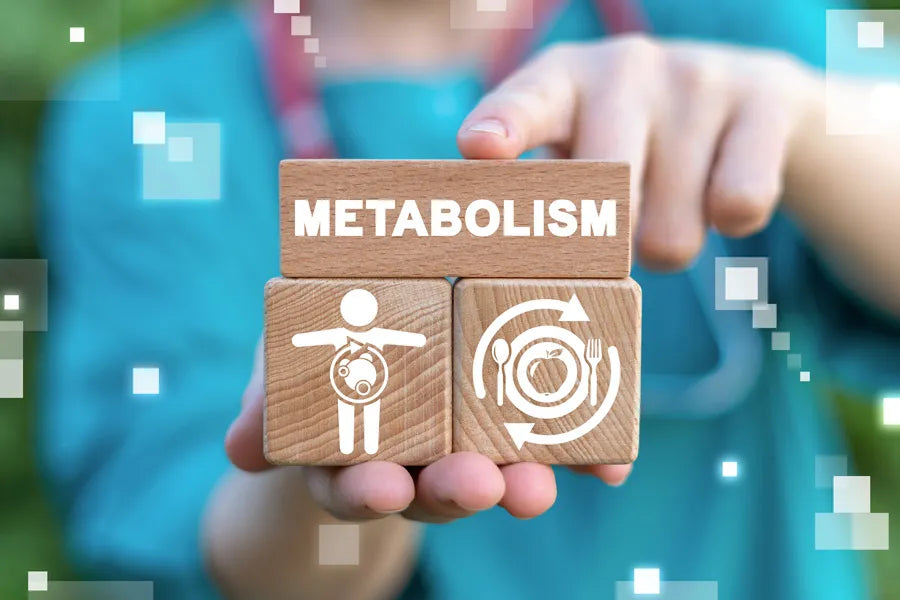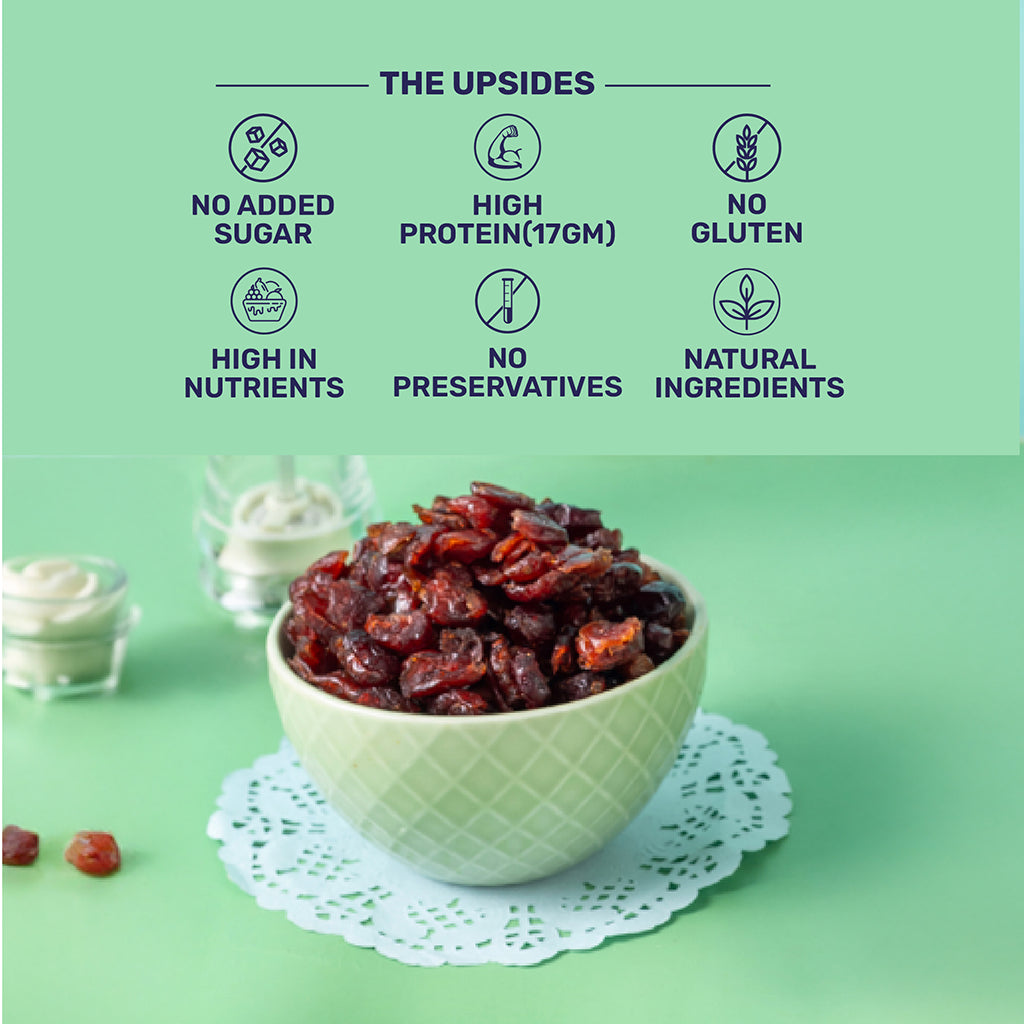
Metabolism, the intricate set of life-sustaining chemical reactions within organisms, serves as the foundation of biological existence. Split into two crucial categories—catabolism and anabolism—metabolism encompasses everything from the energy-releasing breakdown of complex molecules to the energy-consuming synthesis of vital compounds. Essential to the growth, reproduction, and structural maintenance of an organism, metabolism means and processes remain consistent across diverse life forms, from animals to bacteria. This underlying universality highlights the shared biological language of living matter, where energy is not created nor destroyed but transformed, with the molecule ATP carrying the baton of biologically usable energy across cellular processes.
This article delves into the vast world of metabolic mechanisms, tracing the journey from food digestion to energy transformation and examining the myriad factors that regulate one’s metabolic rate. From the significant role enzymes play in metabolic processes to the complexity of metabolic pathways, the content is designed to provide a thorough understanding of how metabolism impacts weight management and the implications of hormonal disorders on metabolic functions. Furthermore, it will shed light on metabolism-boosting foods and habits that can enhance one’s metabolic efficiency. With an analysis of metabolic disorders, this article not only aims to answer the question ‘What is metabolic?’ but also to serve as a metabolism booster guide, offering insights on how to maintain a high metabolism or address a slow one, underscoring the significance of lean protein and metabolism-boosting foods in the finely tuned machinery of protein metabolism and beyond.
The Science of Metabolism
Metabolism is a fundamental biological process, essential for life, where organisms convert food and drink into energy. This complex process can be broken down into two key components:
- Anabolism (Building Up): This is the constructive phase of metabolism where smaller, simpler molecules are built up into larger, more complex ones. Anabolism involves the use of energy to create components of cells, such as proteins and nucleic acids.
- Catabolism (Breaking Down): In contrast to anabolism, catabolism is the destructive phase where larger molecules are broken down into smaller ones, releasing energy in the process. This energy is then used to fuel various bodily functions and activities.
Organisms draw their energy and carbon from different sources, and they can be categorized into four types:
- Organotrophs: These organisms obtain their hydrogen or electrons from organic substrates.
- Lithotrophs: These are organisms that consume inorganic substances.
- Phototrophs: They capture sunlight to obtain energy.
- Heterotrophs: These organisms rely on consuming others to obtain their carbon for growth and development.
In the context of human and animal biology, redox reactions play a pivotal role, where complex organic molecules are broken down into simpler ones such as carbon dioxide and water. This process is not just a random breakdown; it is a controlled release of energy, which is then used to power various functions in the body.
The energy harnessed from the food we consume is quantified in calories, or more precisely, kilocalories. Among the macronutrients, fats are the most energy-dense, providing a significant amount of energy per mass, followed by proteins and carbohydrates. This energy is crucial for maintaining the body’s metabolic processes.
Central to these processes is ATP (adenosine triphosphate), the energy currency of the cell. ATP is responsible for transferring chemical energy within cells for metabolism. Every cell in the human body utilizes ATP for energy transfer, making it a vital molecule for our survival.
The stages of catabolism can be outlined as follows:
- Digestion: the breakdown of food in the digestive system into absorbable forms.
- Energy Release: The conversion of nutrients into usable energy in the form of ATP.
- ATP Production: The creation of ATP molecules, which are then used to power various cellular activities.
It’s important to note that while proteins, carbohydrates, and fats are primarily known for their role in catabolic reactions, they also serve other critical functions throughout the body. Additionally, minerals are integral to metabolism, acting as cofactors for enzymes that facilitate metabolic reactions.
Metabolic processes are essentially chemical reactions, and many of these reactions result in the generation of heat. This heat is a byproduct of the energy conversion process and plays a role in maintaining body temperature.
Lastly, cellular metabolism is a delicate balance between the spontaneous reactions of catabolism and the energy-requiring processes of anabolism. This balance ensures that the body can efficiently build up necessary compounds while simultaneously breaking down nutrients to release energy.
Understanding the science of metabolism provides insight into the intricate workings of the body and underscores the importance of nutrients in our diet. By comprehending how our bodies process and utilize the food we eat, we can make informed decisions about our health and well-being.
Factors Influencing Metabolic Rate
Several factors influence an individual’s metabolic rate, which is the speed at which the body burns calories. These factors can either increase or decrease metabolism, affecting how efficiently the body converts food into energy.
- Basal Metabolic Rate (BMR): BMR is the amount of energy expended while at rest in a neutrally temperate environment. It accounts for a significant portion of daily energy use, ranging from 50-80%, and is essential for maintaining basic bodily functions such as breathing and circulation.
-
Body Composition:
- Individuals with larger bodies or greater muscle mass tend to have a higher metabolic rate due to the energy required to maintain and operate these tissues. This is because muscle tissue burns more calories than fat tissue, even when at rest.
- Conversely, as people age, they often experience sarcopenia, which is the loss of muscle mass, leading to a 3-5% decline in metabolic rate every decade after the age of 30.
-
Gender Differences:
- Generally, men have a faster metabolism than women. This is attributed to men typically having more muscle mass, larger bones, and less body fat, all of which contribute to higher energy expenditure.
-
Genetic Factors:
- Genetics also play a role in determining an individual’s BMR, with some families naturally having faster or slower metabolisms than others.
-
Physical Activity:
- Regular exercise boosts the metabolic rate both during and after physical activity. This is due to the energy required for muscle repair and growth post-exercise.
-
Hormonal Balance:
- Hormonal imbalances, such as those seen in hypothyroidism or hyperthyroidism, can significantly affect the metabolic rate, either slowing it down or speeding it up.
-
Environmental Temperature:
- Exposure to extreme heat or cold environments forces the body to work harder to maintain its normal temperature, which can lead to an increase in BMR.
-
Diet and Nutrition:
- The types of foods consumed and nutritional deficiencies can impact metabolism. Certain foods can either act as a metabolism booster or slow it down.
Understanding these factors is crucial for anyone looking to manage their weight or improve their metabolic health. By recognizing the elements that can be modified, such as increasing physical activity or adjusting their diet, individuals can take proactive steps towards enhancing their metabolic rate.
The Role of Enzymes in Metabolism
Enzymes are instrumental in the metabolic processes that sustain life. Acting as biological catalysts, they allow the body to perform chemical reactions at rates sufficient for survival. Here’s how enzymes function in metabolism:
- Catalytic Role: Enzymes accelerate metabolic reactions by reducing the activation energy needed, thus speeding up the conversion of substrates into energy or other compounds. Without enzymes, these reactions would occur too slowly to sustain life functions. The specific nature of enzymes ensures that they are efficient and selective in their activity.
- Substrate Specificity: Each enzyme is tailored to a particular reaction, acting on specific substrates. This specificity is a key feature of enzymes, allowing for the precise control of metabolism. Enzymes are integral to various bodily processes, including energy storage and release, and are essential for maintaining overall health and vitality.
- Metabolic Pathways: Enzymes do not work in isolation but as part of metabolic pathways, which are sequences of enzyme-driven reactions. These pathways transform substrates through a series of steps into final products necessary for the body’s functions. The orchestrated action of enzymes in these pathways highlights their collaborative nature in metabolism.
Enzymes are subject to regulation to ensure metabolic balance:
- Regulatory Mechanisms: Enzymes are regulated at multiple levels, including genetic control, hormonal signals, nerve impulses, and the presence of other small molecules. This regulation ensures that enzymes act in concert with the body’s needs and environmental cues.
- Medical and Industrial Relevance: Beyond their biological roles, enzymes have practical applications in medicine, such as aiding in wound healing, diagnosing diseases, and treating allergic reactions. They are also employed in various industries, from pharmaceuticals to food production, demonstrating their versatility and utility.
- Enzymatic Disorders: When enzymes are defective or absent, it can lead to metabolic disorders such as albinism or phenylketonuria. These conditions underscore the critical role enzymes play in maintaining metabolic health.
Classification and Composition of Enzymes:
- Enzyme Classes: Enzymes are categorized based on the reactions they catalyze. There are six main classes: oxidoreductases, transferases, hydrolases, lyases, isomerases, and ligases. Each class is associated with a specific type of chemical reaction, which is part of the broader metabolic network.
- Protein Structure: Enzymes are proteins, with some composed of a single amino acid chain and others made up of multiple subunits. The structure of an enzyme is closely related to its function, as its shape determines its interaction with substrates.
Incorporating the primary keyword metabolism and secondary keywords such as metabolic, metabolism fast, and metabolism booster, this section emphasizes the crucial role enzymes play in the body’s metabolic processes. Understanding enzymes is fundamental to grasping the meaning of metabolism, and it is also central to discussions of what is metabolic, catabolism, digestion, high metabolism, and metabolism-boosting foods.
Energy Production through Metabolism
Energy production through metabolism is a dynamic and multifaceted process, employing a series of stages to convert the food we eat into the primary energy currency of cells, ATP. The journey from nutrient intake to energy synthesis involves the following critical stages:
- Digestion and Monomer Release: Initially, the complex polymeric molecules in food undergo digestion, a process that breaks them down into their monomer subunits. These include amino acids from proteins, sugars from carbohydrates, and fatty acids from fats. Digestion predominantly occurs in the intestine, but certain cellular components, such as lysosomes, also play a role in breaking down materials within cells.
- Glycolysis and Pyruvate Oxidation: Following digestion, the glucose derived from carbohydrates enters the glycolytic pathway. During glycolysis, glucose is converted into pyruvate, producing small amounts of ATP and NADH in the process. Pyruvate then travels into the mitochondria, where it is transformed into acetyl CoA, an activated carrier molecule that serves as a critical intermediary in metabolism. This conversion is not exclusive to glucose; fatty acids also undergo oxidation to generate significant quantities of acetyl CoA.
- Citric Acid Cycle and Oxidative Phosphorylation: Acetyl CoA then enters the citric acid cycle, also known as the Krebs cycle. This cycle is a sequence of reactions that further oxidize the acetyl group, ultimately producing CO2, ATP, NADH, and FADH2. The NADH generated here, as well as from other metabolic processes, enters the electron transport chain during oxidative phosphorylation. This stage occurs within the mitochondria and stands as the principal mechanism for ATP synthesis in most human cells, where the transfer of electrons from NADH and FADH2 to oxygen results in the production of water and the synthesis of the majority of ATP in cells.
The efficiency of these metabolic processes is crucial for the body’s overall energy management. ATP is formed when reaction intermediates create higher-energy phosphate bonds than those found in ATP itself, allowing for the ready conversion of ADP to ATP, and thus storing energy for cellular activities.
The central role of the citric acid cycle in aerobic organisms’ energy metabolism cannot be overstated. As the convergence point for the degradation products of nutrients, it leads to the complete oxidation of acetyl groups, turning them into CO2, and plays a pivotal role in the fast-track metabolism.
Lastly, the electron transport chain represents the culmination of cellular respiration. High-energy electrons are funneled through a series of proteins, culminating in their transfer to oxygen, which creates a proton gradient that ultimately drives the synthesis of ATP. This process is the backbone of energy production and is essential for maintaining a high metabolism and ensuring efficient metabolism in the body’s biological systems.
Metabolic Pathways
Metabolic pathways are integral to the functioning of cells, facilitating the transformation of substances into energy and other necessary compounds. These pathways are complex and interdependent, requiring precise regulation to maintain cellular homeostasis. Here’s an exploration of these vital processes:
- Enzymatic Abundance: Each tissue contains hundreds of different enzymes to cater to the diverse reactions that comprise metabolism. These enzymes are tailored to specific reactions, ensuring that the metabolic processes are efficient and controlled.
-
Pathway Classifications: Metabolic pathways are classified into three main types:
- Catabolic Pathways: These pathways involve the breakdown of molecules to release energy. An example is glycolysis, where glucose is converted into pyruvate, yielding energy in the form of ATP.
- Anabolic Pathways: Conversely, these pathways consume energy to build complex molecules from simpler ones, such as the synthesis of proteins from amino acids.
- Amphibolic Pathways: These can function as either catabolic or anabolic, depending on the cellular needs, such as the citric acid cycle, which plays a central role in both the breakdown and synthesis of biomolecules.
- The Pentose Phosphate Pathway: It is a vital oxidative process in which glucose-6-phosphate is converted to generate NADPH, ribose-5-phosphate, and glyceraldehyde-3-phosphate. NADPH generated from this pathway is essential for biosynthetic reactions and maintaining the redox balance within the cell.
Regulation of these pathways is multifaceted:
- Feedback Inhibition: A crucial regulatory mechanism is feedback inhibition, where the end product of a metabolic pathway inhibits an enzyme in an earlier step of the pathway. This prevents the overaccumulation of the product and ensures resource efficiency within the cell.
- Stoichiometric and Utilization Considerations: The regulation of metabolic pathways also depends on the stoichiometric reaction model, which takes into account the balance and proportions of reactants and products. Additionally, the utilization rate of metabolites and the translocation pace of molecules across the lipid bilayer are factored into the regulation process, ensuring that the pathways adapt to the cellular demands and environmental conditions.
- Complex Interdependencies: Metabolic pathways do not operate in isolation; they are part of a network where one pathway’s outputs can be inputs for another. This interconnectivity requires fine-tuned regulation to maintain balance and respond to physiological changes, such as those occurring during weight loss or weight management efforts. These adjustments impact major metabolic pathways, illustrating the complexity of metabolism and its influence on overall health.
In the context of metabolism, these pathways are not just a series of isolated chemical reactions but a coordinated and regulated network that is foundational to life. The understanding of metabolic pathways sheds light on the meaning of metabolism and provides insights into what is metabolic, how metabolism can be fast or slow, and how dietary choices and habits can serve as a metabolism booster. For instance, lean protein intake can influence protein metabolism, and the selection of metabolism-boosting foods can have a significant impact on one’s metabolic rate.
Metabolism and weight management
In managing weight, the interplay between metabolism and dietary habits is paramount. Here’s how certain foods and lifestyle choices can influence metabolic rate and weight management:
- Protein-Rich Foods: Incorporating lean protein sources into the diet, such as lean meats, fish, eggs, and legumes, can enhance the thermic effect of food (TEF), which is the energy required for digestion. Protein has a TEF of 15-30%, making the body work harder during digestion and thus increasing calorie burn.
- Mineral Intake for Thyroid Health: The thyroid gland plays a critical role in regulating metabolism. Minerals like iron and selenium are essential for thyroid health and can be found in foods such as meat, seafood, and nuts. Ensuring adequate intake of these minerals supports proper thyroid function and, thus, a healthy metabolism.
- Spices and Metabolism: Certain spices, such as capsaicin from chili peppers, may slightly increase the rate at which the body burns calories, offering a metabolism boost. Similarly, ginger and other related spices may support metabolic actions and help in weight management.
- Beverages That Boost Metabolism: The caffeine in coffee is known to aid in increasing metabolic rate, particularly during exercise, while the catechins in tea, especially oolong and matcha green tea, can enhance fat oxidation.
- Hydration and Thermogenesis: Drinking water may lead to a temporary spike in metabolism of 24–30% due to water-induced thermogenesis. This effect can also act as a natural appetite suppressant, potentially reducing overall calorie intake.
- Fiber-Rich Foods: Foods high in fiber, such as greens, beans, and whole grains, require more energy to digest, which keeps the mitochondria—the powerhouse of the cell—active. Staying hydrated ensures that fiber can absorb water and work effectively.
- Exercise and Muscle Mass: Resistance training helps build and maintain muscle mass, which is more metabolically active than fat, thus boosting the basal metabolic rate.
- Plant-Based Diet: A diet rich in omega-3s, often found in plant-based foods, can aid in boosting metabolism. Conversely, avoiding fried and oily foods high in saturated and trans fats can help prevent chronic illnesses and support metabolic health.
- Metabolic Adaptation: Weight loss strategies, whether through diet, exercise, or medical intervention, must consider the body’s metabolic adaptation to calorie restriction. This adaptation is specific to the calorie restriction regime and plays a role in maintaining energy balance to resist regaining weight.
In summary, a multifaceted approach that includes dietary modifications, regular physical activity, and lifestyle changes can effectively influence metabolism and aid in weight management. Emphasizing metabolism-boosting foods and habits can lead to favorable metabolic changes, improve overall health, and aid in the management of metabolic diseases.
Hormonal Disorders of Metabolism
The endocrine system, a network of glands that produce hormones, is essential in regulating various bodily activities, including metabolism. Hormones act as messengers, instructing cells on how to function properly, and any imbalance can disrupt metabolic processes. Here are some key hormonal disorders that affect metabolism:
- Diabetes Mellitus: This disorder is characterized by high blood glucose levels and can lead to serious complications if not managed properly. Treatment typically involves a combination of diet, oral medication, or insulin therapy to help manage blood sugar levels and prevent damage to organs such as the eyes, kidneys, and nerves.
- Thyroid Diseases: Conditions like hyperthyroidism (overactive thyroid) and hypothyroidism (underactive thyroid) greatly impact metabolic rate. Treatments may include thyroid hormone replacement or medications to block excessive hormone production, depending on whether the thyroid is producing too much or too little hormone.
- Bone Diseases: Endocrine disorders can also affect bone density, leading to conditions such as osteomalacia (softening of the bones) and osteoporosis (weakening of the bones). These factors can increase the risk of fractures and are addressed by endocrinologists through diagnostic evaluations and suitable treatments.
- Reproductive Issues: Hormonal imbalances can cause reproductive problems, leading to infertility. Reproductive endocrinology deals with these issues, often through hormone supplementation or replacement therapies.
- Pituitary Gland Disorders: These can disrupt the balance of hormones in the body and may require medications for management. In some cases, surgical intervention might be necessary.
- Growth Disorders: In children and adults, growth hormone imbalances can lead to growth disorders. Safe and efficient growth hormone therapies are available for treatment.
- Hypertension: Certain hormonal disorders, such as those involving high levels of aldosterone or conditions like pheochromocytoma, can cause high blood pressure. Endocrinologists can successfully treat these conditions.
- Lipid Disorders: Disorders like high cholesterol and hypertriglyceridemia are linked with an increased risk of coronary diseases, paralysis, and peripheral vascular disease. Management typically includes a combination of diet, exercise, and medications.
Additionally, insulin plays a pivotal role in regulating blood glucose levels by activating glucose transport mechanisms and glucose-utilizing metabolic pathways in different tissues. Understanding the function of insulin is crucial for grasping the complexity of metabolism and the impact of hormonal disorders on metabolic health.
Endocrine disorders result from either an overproduction or underproduction of hormones or the development of lesions within the endocrine system. Endocrinologists, who specialize in the endocrine system and require extensive medical training, often diagnose and treat these disorders. Their expertise encompasses a wide range of conditions, including:
- Diabetes mellitus
- Thyroid diseases
- Bone diseases
- Reproductive/infertility issues
- Obesity
- Pituitary gland disorders
- Growth disorders
- Hypertension
- Lipid disorders
These hormonal imbalances can lead to a variety of health issues, such as metabolic disorders, growth problems, and reproductive issues, significantly affecting a person’s quality of life. Understanding these disorders and their treatments is critical for those looking to maintain a healthy metabolism and overall well-being.
Metabolism-Boosting Foods and Habits
Incorporating certain foods and adopting specific habits can effectively enhance one’s metabolic rate. Here are some metabolism-boosting foods and habits backed by scientific evidence:
- Whole Grains and Fiber: Consuming whole grains and foods high in fiber can increase metabolic rate as the body expends more energy to break them down. The digestion of fiber-rich foods, like oats and brown rice, can lead to a higher thermic effect, which in turn can boost metabolism.
- Lean Proteins: The body uses more calories to digest protein compared to fats and carbohydrates. Including lean protein sources such as chicken, turkey, tofu, and legumes in the diet can elevate the metabolic rate by enhancing the thermic effect of food. This is especially beneficial for those looking to manage their weight and improve their protein metabolism.
- Capsaicin-Containing Spices: Spices like cayenne pepper contain capsaicin, which can temporarily increase metabolic rate. Studies suggest that even a small amount of capsaicin can lead to a slight uptick in the number of calories burned, aiding in metabolism and weight management.
In addition to diet, certain lifestyle habits can significantly influence metabolic rate:
- Regular Physical Activity: Engaging in regular exercise, particularly high-intensity interval training (HIIT) and strength training, can raise one’s basal metabolic rate, leading to more calories being burned throughout the day. This is due to the increased muscle mass and enhanced efficiency of energy utilization in the body.
- Adequate Sleep: Sufficient sleep is essential for metabolic health. Lack of sleep can disrupt hormonal balance, including hormones that regulate appetite and metabolism, leading to a slower metabolism.
- Staying Hydrated: Drinking enough water is crucial for metabolic processes. Studies have shown that drinking water can temporarily boost metabolism by inducing thermogenesis, especially if the water is cold, as the body uses energy to heat it to body temperature.
By incorporating these metabolism-boosting foods and habits into one’s daily routine, individuals can support their metabolic health and contribute to their overall well-being. It’s important to remember that, while these strategies can aid in enhancing metabolism, a balanced approach that includes a variety of nutrients and regular physical activity is key to sustaining metabolic functions.
Metabolic Disorders
Metabolic disorders encompass a wide range of conditions that can significantly affect an individual’s health. These disorders arise when abnormalities in the body’s metabolic processes occur, leading to an imbalance between catabolism and anabolism. The causes of these disorders are diverse and can include genetic factors, organ dysfunction, and mitochondrial dysfunction. As such, understanding and managing these disorders is critical for maintaining overall health and preventing complications.
Types and Causes of Metabolic Disorders
-
Inherited Metabolic Disorders: These are often genetic conditions where the body cannot properly process certain nutrients due to enzyme deficiencies or defects. Examples include:
- Lysosomal storage disorders like Tay-Sachs disease
- Galactosemia, which affects the processing of the sugar galactose
- Maple syrup urine disease and phenylketonuria (PKU), which involve amino acid metabolism
- Glycogen storage diseases affecting glucose storage and release
- Mitochondrial disorders disrupt energy production.
- Peroxisomal disorders like Zellweger syndrome
- Metal metabolism disorders such as Wilson disease
- Organic acidemias and urea cycle disorders impact waste removal.
- These conditions are often diagnosed through genetic testing and may require specialized dietary management or enzyme replacement therapy.
- Acquired Metabolic Disorders: These disorders develop due to diseases in organs responsible for metabolic functions, such as the liver or pancreas. Diabetes is a prime example, affecting over 34 million Americans, where the body’s ability to regulate blood sugar is compromised. Organ dysfunction can lead to a range of metabolic issues that require careful monitoring and treatment.
Symptoms and Diagnosis
- Symptoms: The symptoms of metabolic disorders can be varied and may include fatigue, muscle weakness, unexpected weight changes, and, in severe cases, developmental problems in babies and infants. It is essential to recognize these signs early to prevent further health deterioration.
- Diagnostic Tests: The diagnosis of metabolic disorders typically involves a comprehensive review of symptoms, medical history, and family history, along with blood tests such as the Comprehensive Metabolic Panel (CMP) and Lactate Test. These tests help identify abnormalities in metabolism and guide appropriate treatment strategies.
Treatment and Management
- Lifestyle Changes: Many metabolic disorders require lifelong management, which may include dietary modifications, physical activity, and medications to manage symptoms and prevent complications.
- Medications: Depending on the specific disorder, medications may be prescribed to correct metabolic imbalances or replace deficient enzymes.
- Ongoing Research: Clinical trials and research continue to advance the understanding and treatment of metabolic disorders. Resources available through ClinicalTrials.gov and MEDLINE/PubMed provide valuable information on the latest developments in the field.
Metabolic disorders have a profound impact on individuals’ lives and public health at large. Metabolic syndrome, for instance, affects an estimated one in three American adults, elevating the risk for cardiovascular disease and stroke. This highlights the significance of early detection, appropriate treatment, and continuous research to enhance outcomes for individuals impacted by these conditions.
FAQs
What does metabolism encompass in a detailed sense?
Metabolism involves the series of chemical reactions that occur within the cells of the body, transforming food into the energy necessary for various functions such as movement, thought, and growth. These reactions are controlled by particular proteins that regulate metabolic processes.
Can you categorize metabolism into different types?
Yes, metabolism can be broadly categorized into two types: catabolism and anabolism. Catabolism involves the breakdown of organic matter, while anabolism is the process that uses energy to create cell components, including proteins and nucleic acids.
How would you explain metabolism with an example of a metabolic process?
Metabolism is the aggregate of all reactions happening in each cell of the body, providing energy for vital functions and the creation of new organic substances. An example of a metabolic process is the breakdown of glucose in the cells to produce energy, which is then used for various bodily functions.
What is included in the simple explanation of metabolism?
The basic definition of metabolism encompasses all the chemical processes that occur continuously within the body, enabling life and its normal operations, a state known as homeostasis. These processes range from breaking down nutrients from food to building and repairing bodily tissues.
















Comments (0)
Back to Learn